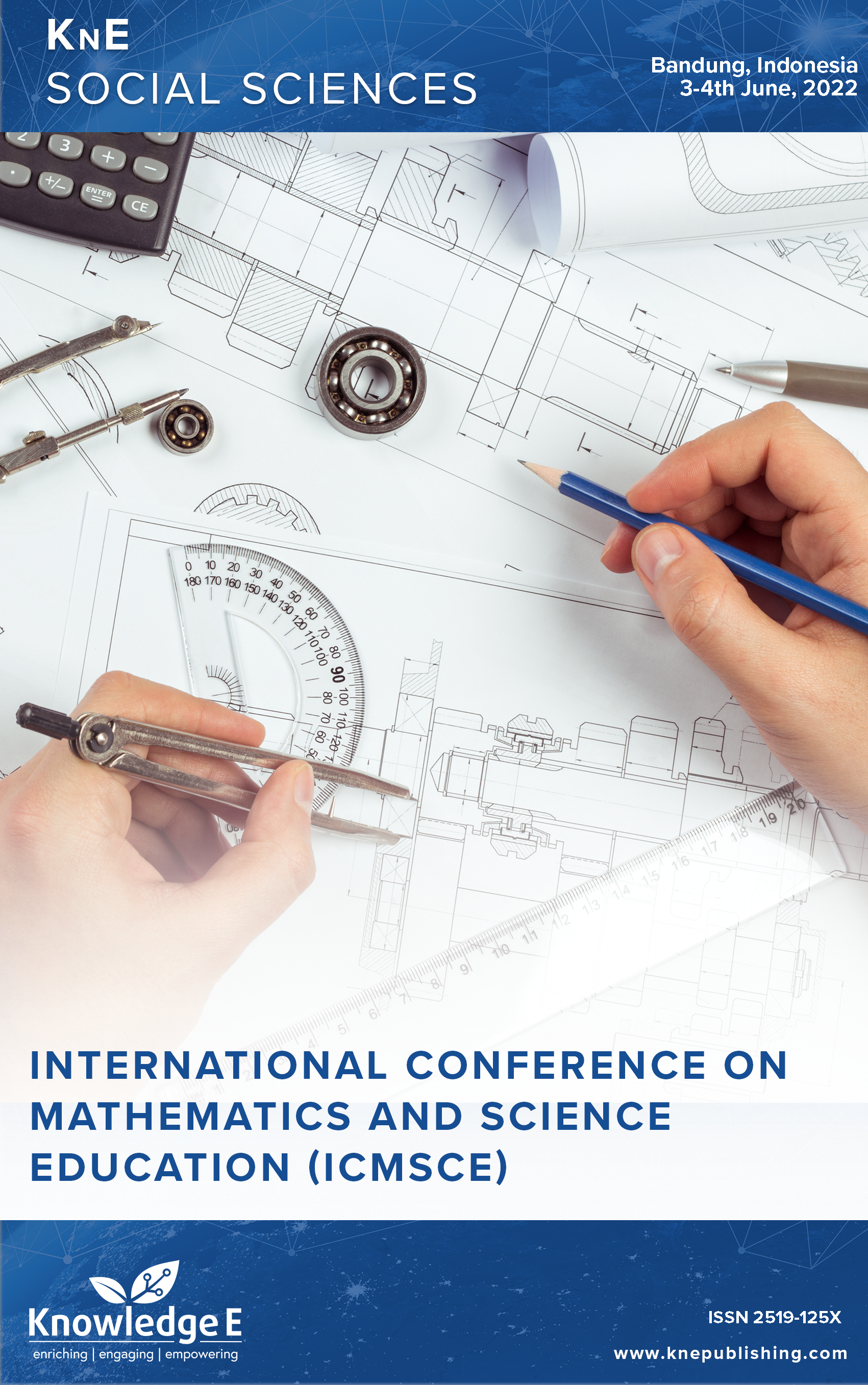Mathematics Proficiency -- A Systematic Literature Review
DOI:
https://doi.org/10.18502/kss.v9i13.15965Abstract
There have been a significant number of studies on mathematical proficiency; however, there are no classifications on research related to it. This study aims to gather and analyze previous studies on mathematical proficiency based on its publication year, research subject, methods, and results. This research is a survey-based descriptive study using the SLR method. The survey was conducted with secondary data in the form of research articles on mathematical proficiency at all educational levels, teachers and students were also included from 2010 to 2020. The steps included in this research were data collection, data analysis, and conclusion. Collected data were in the form of research articles published in international journals and proceedings indexed in Scopus and other trusted databases, such as Thomson, Google Scholar, Science Direct, and Eric databases. The results show that the majority of research on mathematical proficiency was the ones performed in the year 2019 with percentages of 20% and 16%, and the most significant subject were junior high school students with 21%. Results on mathematical proficiency were based on the level of proficiency, positive and negative correlations between mathematical proficiency and other variables, efforts in improving mathematical proficiency, and the assessment of mathematical proficiency. The results suggest that this research could support further studies on mathematical proficiency.
Keywords: mathematics proficiency, systematic literature review
References
Ellitan L. “Competing in the era of industrial revolution 4.0 and society 5.0.,” Jurnal Maksipreneur: Manajemen, Koperasi, dan Entrepreneurship. vol. 10, no. 1, p. 1, 2020. https://doi.org/10.30588/jmp.v10i1.657. DOI: https://doi.org/10.30588/jmp.v10i1.657
Aquilani B, Piccarozzi M, Abbate T, Codini A. The role of open innovation and value co-creation in the challenging transition from industry 4.0 to society 5.0: toward a theoretical framework. Sustainability (Basel). 2020;12(21):1–21. DOI: https://doi.org/10.3390/su12218943
Ahmad S, Prahmana RCI, Kenedi AK, Helsa Y, Arianil Y, Zainil M. “The instruments of higher order thinking skills.” Journal of Physics: Conference Series. vol. 943, no. 1, p. 2018. DOI: https://doi.org/10.1088/1742-6596/943/1/012053
Habibullah H, Retnowati E. Conference on research, implementation and education of mathematics and science, technology, and., 2021.
V.N. Yulian and Wahyudin, “Analysing categories of mathematical proficiency based on Kilpatrick opinion in junior high school.,” Journal of Physics: Conference Series. vol. 1132, no. 1, p. 2018. DOI: https://doi.org/10.1088/1742-6596/1132/1/012052
Awofala AO. Assessing senior secondary school students’ mathematical proficiency as related to gender and performance in mathematics in Nigeria. International Journal of Research in Education and Science. 2017;3(2):488–502. DOI: https://doi.org/10.21890/ijres.327908
Hutajulu M, Minarti ED, Senjayawati E. “Improving of mathematical proficiency and disposition using multi representation approach on vocational students.” Journal of Physics: Conference Series. vol. 1315, no. 1, p. 2019. https://doi.org/10.1088/1742- 6596/1315/1/012023. DOI: https://doi.org/10.1088/1742-6596/1315/1/012023
Cragg L, Gilmore C. Skills underlying mathematics: the role of executive function in the development of mathematics proficiency. Trends Neurosci Educ. 2014;3(2):63–8. DOI: https://doi.org/10.1016/j.tine.2013.12.001
Pratama D, Athar F, Zainul M. How well Indonesian schoolchildren proficiency in mathematics based on the result of national examination 2017. J Phys Conf Ser. 2019;1157(3):4–8. DOI: https://doi.org/10.1088/1742-6596/1157/3/032126
Siregar ND, Surya E. Analysis of students’ junior high school mathematical connection ability. Int J Sci Basic Appl Res. 2017;33(2):309–20.
Fowler S, O’Keeffe L, Cutting C, Leonard S. The mathematics proficiencies: a doorway into spatial thinking. Aust Prim Math Classr. 2019;24(1):36–40.
Bernardo ABI, Cordel MO, Lapinid MRC, Teves JMM, Yap SA, Chua UC. “Contrasting profiles of low-performing mathematics students in public and private schools in the Philippines: insights from machine learning.,” Journal of Intelligence. vol. 10, no. 3, p. 2022. https://doi.org/10.3390/jintelligence10030061. DOI: https://doi.org/10.3390/jintelligence10030061
Cerbito AF. Comparative analysis of mathematics proficiency and attitudes toward mathematics of senior high school student [IJSRP]. International Journal of Scientific and Research Publications. 2020;10(05):211–22. DOI: https://doi.org/10.29322/IJSRP.10.05.2020.p10125
Alfayez MQ. Mathematical proficiency among female teachers of the first three grades in Jordan and its relationship to their mathematical thinking. Front Educ (Lausanne). 2022;7(December):1–10. DOI: https://doi.org/10.3389/feduc.2022.957923
Lee JS, Ginsburg HP. Early childhood teachers’ misconceptions about mathematics education for young children in the United States. Australas J Early Child. 2009;34(4):37–45. DOI: https://doi.org/10.1177/183693910903400406
Cargnelutti E, Tomasetto C, Passolunghi MC. The interplay between affective and cognitive factors in shaping early proficiency in mathematics. Trends Neurosci Educ. 2017;8–9:28–36. DOI: https://doi.org/10.1016/j.tine.2017.10.002
Hegg M, Papadopoulos D, Katz B, Fukawa-Connelly T. Preservice teacher proficiency with transformations-based congruence proofs after a college proof-based geometry class. J Math Behav. 2018;51( July):56–70. DOI: https://doi.org/10.1016/j.jmathb.2018.07.002
Birgin O. “Investigation of Turkish mathematics teachers ’ proficiency perceptions in using information and communication technologies in teaching *,” p. 10639, 2020. https://doi.org/10.1007/s10639-019-09977-1. DOI: https://doi.org/10.1007/s10639-019-09977-1
Stoffelsma L, Spooren W. The relationship between English reading proficiency and academic achievement of first-year science and mathematics students in a multilingual context. Int J Sci Math Educ. 2019;17(5):905–22. DOI: https://doi.org/10.1007/s10763-018-9905-z
Spoden C, Fleischer J, Frey A. Person misfit, test anxiety, and test-taking motivation in a large-scale mathematics proficiency test for self-evaluation. Stud Educ Eval. 2020;67( June):100910. DOI: https://doi.org/10.1016/j.stueduc.2020.100910
Garrett R, Davis E, Eisner R. R.E.L.M. (ED), and A.I. for R. (AIR), “Student and school characteristics associated with academic performance and English language proficiency among English learner students in grades 3-8 in the Cleveland metropolitan school district. REL 2019-003.,” Regional Educational Laboratory Midwest. no. June, p. 2019.
Creswell JW. Educational research. Boston: PEARSON; 2012.
Stryk DM. “Influence of reading proficiency on placement and success in online developmental mathematics.,” p. 2018.
Symons D, Dunn R. Productive discussion as a foundation for primary mathematics. Aust Prim Math Classr. 2019;24(2):21–5.
Brijlall D, Maharaj A. “Using group work as a learning strategy for inverse laplace transform by engineering students.,” PONTE International Scientific Research Journal. vol. 73, no. 8, p. 2017. https://doi.org/10.21506/j.ponte.2017.8.12. DOI: https://doi.org/10.21506/j.ponte.2017.8.12
Sudiarta IGP, Widana IW. “Increasing mathematical proficiency and students character: Lesson from the implementation of blended learning in junior high school in Bali.” Journal of Physics: Conference Series. vol. 1317, no. 1, p. 2019. https://doi.org/10.1088/1742-6596/1317/1/012118. DOI: https://doi.org/10.1088/1742-6596/1317/1/012118
bin Khairani AZ, bin A Razak N. “Advance in educational measurement: a rasch model analysis of mathematics proficiency test”. Int J Soc Sci Humanit. 2013;2(3):248–51. DOI: https://doi.org/10.7763/IJSSH.2012.V2.104
Junpeng P, Marwiang M, Chiajunthuk S, et al. Validation of a digital tool for diagnosing mathematical proficiency. International Journal of Evaluation and Research in Education. 2020;9(3):665–74. DOI: https://doi.org/10.11591/ijere.v9i3.20503

